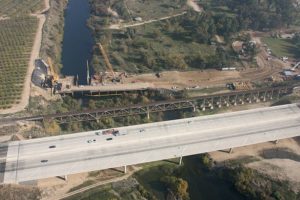Where avoiding polluted air goes, roadway users just can’t seem to catch a break. I mean, while out on the road we’re exposed to air toxics left, right, up, down, front, back, you name it – all ways but loose it seems.
Tailpipe pollution or what is more commonly referred to as exhaust. Bits and pieces of tires from wear made airborne from driving. Regarding brake wear and tear it’s the same. You get the idea.
So right when we think we’ve heard everything, here comes news that asphalt – a material heavily relied upon in pavement-making – is also a source of air-pollutant emissions. (Please reference the post: “Motor vehicles one source of roadway air pollution – pavement asphalt is another, research reveals,” here).
In a Sept. 2, 2020 Yale University news release, as it was reported, “Asphalt is a near-ubiquitous substance – it’s found in roads, on roofs and in driveways – but its chemical emissions rarely figure into urban air quality management plans. A new study finds that asphalt is a significant source of air pollutants in urban areas, especially on hot and sunny days.”
As a matter of fact I was really taken aback by this one statement in the same release in particular: “Because of the types of compounds asphalt emits, its potential [secondary organic aerosol] formation is comparable to motor vehicle emissions in Los Angeles, the researchers said – implying that finding ways to make roads more environmentally friendly is as important as doing the same for cars and trucks.”
The easiest solution would be to just stay off the so-called “paved ways.” On the one hand, going to those kinds of lengths, I would guess for most, is out of the question. On the other hand, however, surely there must be an answer or answers.

A more realistic proposition than the one suggested above could be substituting concrete in place of asphalt pavement? All well and good except for the fact that the production or manufacturing process for concrete is, itself, a highly polluting one.
A way to circumvent this problem is to use recycled concrete.
As it relates, I seem to recall hearing or reading about ripped-up roadway and/or razed-building concrete during demolition work then being reprocessed and reconstituted as material for use in Construction Package 1 work on the California high-speed rail building project. This, however, would need to be verified.
Here’s what I know for sure. “In 2016, more than 99 percent of all waste from construction-related activities was recycled, according to the California High-Speed Rail Authority (Authority) in [2017’s] California High-Speed Rail Sustainability Report, including concrete, steel, asphalt and wood waste. As a matter of fact, 100 percent of all concrete and steel waste was recycled. Meanwhile, 98 percent of debris from demolition was likewise recycled in 2016. That’s practically zero waste from construction and demolition activities.” (See: “Conventional roadwork can’t hold a candle to constructing Cal. high-speed rail” here).
Next, and fortunately, drivers have the option typically of closing all windows and setting the cab air selection control to “recirculate”. Bicyclists, pedestrians, skateboardists, hoverboardists, scooter users, etc., unfortunately, are not afforded that luxury.
Aside from all that, then maybe some benign roadway sealant could do the trick: Something definitely worth checking into I think.
At any rate, as good as these suggestions are, coming up with a pavement material that is not only safe but effective in terms of keeping harmful air-pollutant emissions at bay, well, that could very well be the best approach to take after all.
Image above: California High-Speed Rail Authority
This post was last revised on Sept. 3, 2020 @ 6:34 p.m. Pacific Daylight Time.
– Alan Kandel

Another roadway use idea is to program highway coatings so that air circulates in a healthier manner. For example, in Los Angeles/Santa Monica, select the sun rays so that the air rises and brings in fresh air from the ocean.
By programming surfaces to better get rid of pollution by using sun’s rays, we could get more clean air into needed areas with less need for air conditioners.